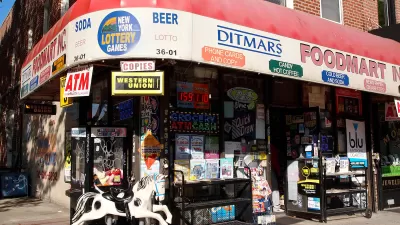Cities struck by the foreclosure crisis are implementing a number of measures to help prevent foreclosures and stabilize neighborhoods already racked by vacancies.
The article features an interview with L.A. City Councilmember Richard Alarcón, whose council district has been especially impacted by foreclosures. In the interview, Councilmember Alarcón details the variety of programs and policies being tested and implemented to help struggling homeowners and dilapidated neighborhoods.
"Since January 2007 we have had over 2,000 homes foreclosed. From July through September of 2008, we had 629 foreclosures. Through the Valley as a whole, we've had an average of 1,000 foreclosures a month over the last 2.5 months. Obviously the unemployment rate is extremely high. The 12 percent measure that the experts have given us is really more like 20 percent in our district."
"We are also working with Neighborhood Legal Aid in Pacoima and ONE L.A. to design a pilot project that would try to get leverage over the banks to provide a discount up to 60 percent. Then the city would come in with a soft second. If the banks come in with a 60 percent discount we could then guarantee the second. We need to renegotiate the loans so that they are in real value terms."
"We have $25 billion in our portfolio now. We should divest from banks that are unwilling to provide first time homebuyer loans and are unwilling to put their banks into working class communities. Pacoima only has one bank and dozens of check cashing operations."
Thanks to James Brasuell
FULL STORY: L.A. Councilman Alarcón Boosts Foreclosure Mitigation Programs

Trump Administration Could Effectively End Housing Voucher Program
Federal officials are eyeing major cuts to the Section 8 program that helps millions of low-income households pay rent.

Planetizen Federal Action Tracker
A weekly monitor of how Trump’s orders and actions are impacting planners and planning in America.

Ken Jennings Launches Transit Web Series
The Jeopardy champ wants you to ride public transit.

New Mexico Aging Department Commits to Helping Seniors Age ‘In Place’ and ‘Autonomously’ in New Draft Plan
As New Mexico’s population of seniors continues to grow, the state’s aging department is proposing expanded initiatives to help seniors maintain their autonomy while also supporting family caregivers.

USDOT Waters Down Self-Driving Car Regulations
The agency is reducing reporting requirements for autonomous vehicles and cars with self-driving features, prompting concern among safety advocates who say transparency is essential to the safe deployment of AV technology.

‘Minnesota Nice’ Isn’t so Nice When You Can’t Find a Place to Live
The Economic Development and Housing Challenge Program can help address the scourge of homelessness among Indigenous people.
Urban Design for Planners 1: Software Tools
This six-course series explores essential urban design concepts using open source software and equips planners with the tools they need to participate fully in the urban design process.
Planning for Universal Design
Learn the tools for implementing Universal Design in planning regulations.
Heyer Gruel & Associates PA
Ada County Highway District
Institute for Housing and Urban Development Studies (IHS)
City of Grandview
Harvard GSD Executive Education
Toledo-Lucas County Plan Commissions
Salt Lake City
NYU Wagner Graduate School of Public Service





























